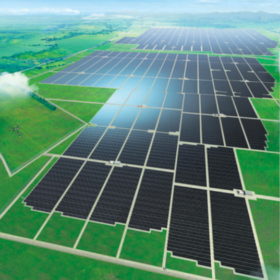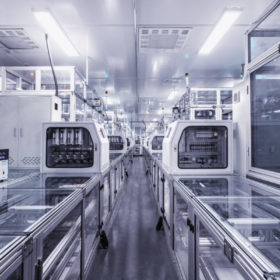Energy storage installations to grow 122-fold by 2040; India among top 3
The global installed capacity will grow from a modest 9 GW/17 GWh as of 2018 to 1,095 GW/2,850 GWh in the next two decades. Just 10 countries will account for almost 75% of the overall gigawatt market, with China, USA, India and Germany leading the pack.
India’s renewable power generation cost the lowest in Asia Pacific
The cost of solar power generation in India has fallen to half the level seen in many other markets in the region due to extensive solar resource, market scale and competition.
Global PV market: 114 GW to be installed in 2019, with continued growth onwards
According to the latest market forecast published by Wood Mackenzie, it seems that global PV installation figures will rise to 125 GW per year from 2020. Continued global capacity expansion will come in through a growing gigawatts-club.
China’s air pollution reduces PV production potential by up to 13%
If China could travel back to the 1960s with its 2016 PV generation capacity it could harvest an additional 14 TWh of solar power, according to a study by academics at universities in Switzerland and the Netherlands. With a mixed record for reducing pollution, the country’s solar fleet output appears to be drastically affected by dimmed solar radiation.
Anti-dumping duty on coated steel will raise solar project costs by 2-4%: Care Ratings
India’s Directorate General of Trade Remedies (DGTR) has determined that flat steel products coated with aluminium and zinc are being dumped by manufacturers in China at dumping margins of 30-50%, South Korea (20-30%) and Vietnam (10-20%). It has proposed anti-dumping duty based on the same to offset material injury to domestic manufacturers.
“Let’s compete on quality and innovation”: Vikram Solar CFO
With India losing major solar markets to stiffer competition from cheaper products, it’s high time to change the game by playing on quality and innovation—according to Vikram Solar Chief Financial Officer Rajendra Kumar Parakh, who spoke to pv magazine on the challenge of shrinking markets before Indian solar manufacturers.
‘Anti-dumping duty on coated steel will impede solar growth’
Citing the risk to solar projects, lobby group the National Solar Energy Federation Of India has asked the Ministry of New and Renewable Energy to exclude flat steel products coated with alloy of aluminum and zinc from anti-dumping duty.
Electrifying the current taxi fleet would help India cut emissions faster: Wood Mackenzie
Though electric vehicles are up to 67% less emissions intensive than gasoline cars, their competitiveness depends on many factors like the source of electricity used for vehicle and battery manufacturing and charging. Given that India still has a high share of coal or other fossil fuels in its power mix, electrifying the current car taxi fleet would help it cut emissions faster than incentivising the use of privately owned EVs because of the taxis’ greater utilisation in terms of miles travelled.
Longi to spend $349m on new 5 GW module fab in Taizhou
The world’s number one mono silicon module manufacturer will add another 5 GW to its annual panel production capacity in 2020 as it pursues 16 GW of output this year and 25 GW next year.
The long read: China’s battery boom
The global energy storage market is poised to grow rapidly in the coming years, with Bloomberg New Energy Finance (BNEF) predicting $620 billion in investment over the next two decades will push cumulative global installations to 942 GW/2,857 GWh by 2040. Declining lithium-ion battery costs are driving much of this growth, with BNEF expecting the cost of utility-scale storage systems to fall roughly 52% through 2030, following an approximate 80% slide in the average price of lithium-ion battery packs in the first seven years of the current decade.














